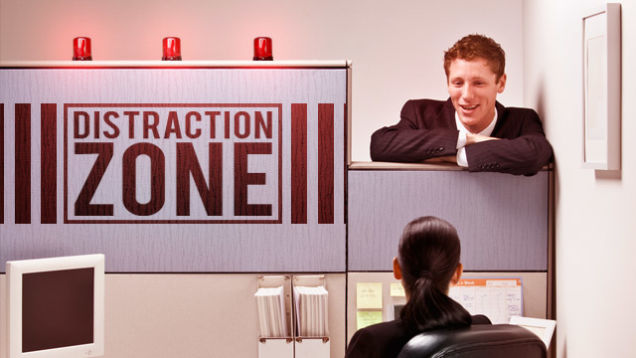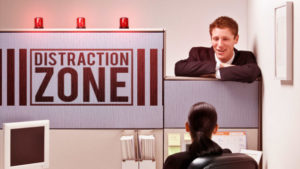How are your employees wasting time at work? CareerBuilder survey offers strangest and most common productivity killers


In a new survey from CareerBuilder, employers discuss the most common productivity killers in the workplace, as well as the most bizarre things they caught employees doing while on the clock.
The national survey was conducted online by Harris Poll on behalf of CareerBuilder from Feb. 11 to March 6, 2015, and included a representative sample of 2,175 hiring and human resource managers across industries and company sizes.
Killing time – and productivity — thanks to smartphones, chatty co-workers and never-ending Twitter feeds that provide hours of distraction, the obstacles that get in the way of actual work are seemingly endless. When asked to name the biggest productivity killers in the workplace, employers cited the following:
• Cell phones/texting: 52 percent
• The Internet: 44 percent
• Gossip: 37 percent
• Social media: 36 percent
• Email: 31 percent
• Co-workers dropping by: 27 percent
• Meetings: 26 percent
• Smoke breaks/snack breaks: 27 percent
• Noisy co-workers: 17 percent
• Sitting in a cubicle: 10 percent
The Strangest Non-Work Activities Workers Have Done On the Job
Employers were also asked to reveal the most unusual or most memorable things they have found an employee doing when they should have been working. Some of the more memorable answers included:
• Employee was taking a sponge bath in the bathroom sink.
• Employee was trying to hypnotize other employees to stop their smoking habits.
• Employee was visiting a tanning bed in lieu of making deliveries.
• Employee was looking for a mail order bride.
• Employee was playing a video game on their cell phone while sitting in a bathroom stall.
• Employee was drinking vodka while watching Netflix.
• Employee was sabotaging another employee’s car tires.
• Employee was sleeping on the CEO’s couch.
• Employee was writing negative posts about the company on social media.
• Employee was sending inappropriate pictures to other employees.
• Employee was searching Google images for “cute kittens.”
• Employee was making a model plane.
• Employee was flying drones around the office.
• Employee was printing pictures of animals, naming them after employees and hanging them in the work area.
The Consequences of Distraction
With so many distractions around, it’s almost surprising any work gets done at all – and sometimes it doesn’t. Productivity killers can lead to negative consequences for the organization, including:
• Compromised quality of work: 45 percent
• Lower morale because other workers have to pick up the slack: 30 percent
• Negative impact of boss/employee relationship: 25 percent
• Missed deadlines: 24 percent
• Loss in revenue: 21 percent
Killing the Productivity Killers
Nearly 3 in 4 employers (74 percent) have taken at least one step to mitigate productivity killers, such as blocking certain Internet sites (33 percent) and banning personal calls/cell phone use (23 percent). Other efforts to mitigate productivity killers include:
• Scheduled lunch and break times: 21 percent
• Monitor emails and Internet use: 21 percent
• Limit meetings: 16 percent
• Allow people to telecommute: 13 percent
• Have an open space layout instead of cubicles: 12 percent
Four Ways to Turn Procrastination Into Productivity
“Between the Internet, cell phones and co-workers, there are so many stimulants in today’s workplace, it’s easy to see how employees get sidetracked,” said Rosemary Haefner, chief human resources officer of CareerBuilder. “The good news is, taking breaks from work throughout the day can actually be good for productivity, enabling the mind to take a break from the job at hand and re-energize you. The trick is finding the right (work-appropriate) activities that promote – rather than deplete – energy.” Haefner offers the following tips for productive procrastination.
• Schedule “play” breaks. Give yourself permission to take a break, and set a definite ending time. Not only will you have something to look forward to after you’ve worked hard, you will also know when it’s time to get back to work.
• Surround yourself with productive people. Much like laughter, productivity can be infectious. Watching how others make themselves productive can inspire us to act similarly.
• Make yourself accountable to your (social) network. Can’t seem to motivate yourself to finish (or start) a big project? Post on your Facebook wall that you will do it. Making yourself publicly accountable will make you more likely to actually do something.
• Just walk away (literally). Can’t seem to concentrate? Go for a 10- or 20-minute walk. Research shows that a few minutes of light exercise can rejuvenate the brain and lead to sharper cognitive function.
